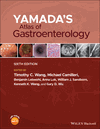Stomach and duodenum: anatomy and structural anomalies
Summary
The anatomy of the stomach and duodenum is intrinsically aligned with their functions. This chapter offers diverse images that provide an overview of the anatomy of the stomach and duodenum and aims to provide a synopsis through pictures and illustrations rather than through text. Endoscopic ultrasonography (EUS) can be used to diagnose and treat gastric disorders. EUS can also be used to drain pancreatic cysts that impinge on the stomach and to biopsy pancreatic lesions and neighboring lymph nodes. While radiological examinations, such as upper gastrointestinal series and small bowel follow-through, have largely been supplanted by conventional and videocapsule endoscopy, radiology still plays a role in the diagnosis of selected gastrointestinal disorders, such as intestinal malrotation.



